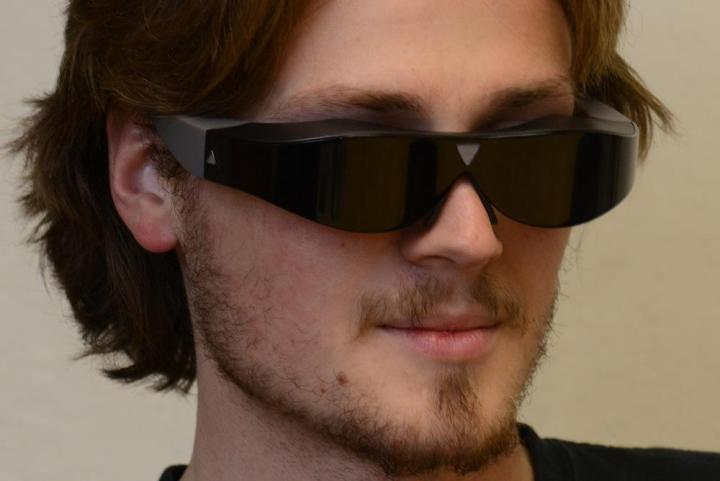
We’re expecting 2014 to be an exciting year when it comes to wearable technology, and although Google Glass is likely to have the largest impact when it finally goes on sale, it’s not going to be the only pair of high-tech specs vying for some face time. This week sees the start of an Indigogo campaign for the Atheer One, a device which goes beyond Glass’ abilities and puts an immersive 3D computer system right in front of your eyes.
The Atheer One connects to your Android smartphone, and displays the company’s 3D platform, through which wearers will see an augmented vision of the world. By using gestures and even eye movements, the Atheer One will provide control over different connected devices, incoming data, and more. This is only the beginning, and eventually, Atheer wants to provide the amazing augmented reality experience you can see in the demo video below.
It’s all displayed in 3D on dual 1024 x 768 pixel screens, which Atheer says is the visual equivalent of holding a 26-inch tablet at arms length, complete with a 65 degree field of view. The glasses weigh 70 grams, which sounds like quite a lot, given Google Glass is 36 grams and regular spectacles are usually less than 15 grams. It’s also equipped with dual 8-megapixel cameras, the usual array of sensors including a gyroscope and a compass.

Why will Atheer be selling two products? The developer model will be out earlier to ensure the apps and software is ready for the later, general release version. The product also looks to still be in the early stages, and the time between the developer and the retail models will also be spent finalizing the design. At the moment, they look like sunglasses, but not cool ones, and we’re not sure anyone will want to wear them out on a daily basis.
So how much does all this cost? If you want the full developer kit you’ll have to bone up $850. It’s currently scheduled to release during the first three months of 2014. As for the consumer-focused Atheer One, that’s priced at a more reasonable $350, but only for the first 100 backers, but it’s not expected to be delivered until December 2014. If you miss the first batch, then Atheer One costs $500. Sounds expensive, but if Atheer’s glasses can live up to the extremely impressive demo video, then it could be worth it. Will you take the chance?




